
Enchanting Tigre: A Riverside Gem in Argentina
Discover Tigre, Argentina: A riverside retreat offering lush landscapes, vibrant markets, and a rich blend of culture and adventure just a short trip from Buenos Aires.
Nestled in the lush Paraná Delta, Tigre is a charming town that offers a unique blend of nature, adventure, and culture. This picturesque destination is just a short journey from Buenos Aires, making it an ideal day trip or weekend getaway. One of the main attractions in Tigre is the Delta itself. Here, you can explore the intricate network of rivers and streams by boat, kayak, or even stand-up paddleboard. The waterways are lined with quaint houses, vibrant gardens, and lush greenery, providing a serene escape from the hustle and bustle of city life. For a deeper dive into local culture, visit the Puerto de Frutos, an open-air market where you can find handmade crafts, fresh produce, and unique souvenirs. The Museo de Arte Tigre is another must-see, housed in a stunning Italian-style building and featuring an impressive collection of Argentine art. Tigre also offers plenty of outdoor activities for the adventurous traveler. You can hike or bike along the scenic paths, visit one of the many riverside parks, or try your hand at fishing. For those interested in history, the town is home to several museums and historic sites, including the Museo del Mate, dedicated to the traditional Argentine drink. Whether you're looking for relaxation, adventure, or a bit of both, Tigre has something to offer every traveler. Its blend of natural beauty and cultural richness makes it a destination not to be missed.
Local tips in Tigre
- Visit during the weekdays to avoid the weekend crowds, especially at popular spots like Puerto de Frutos.
- Bring cash, as some smaller vendors at the market might not accept credit cards.
- Wear comfortable shoes for walking, as you'll likely spend a lot of time exploring on foot.
- Don't forget sunscreen and insect repellent, especially if you're planning to spend time on the water or in the parks.
- Check the weather forecast before your trip, as boat tours and outdoor activities are best enjoyed on a sunny day.
Enchanting Tigre: A Riverside Gem in Argentina
Nestled in the lush Paraná Delta, Tigre is a charming town that offers a unique blend of nature, adventure, and culture. This picturesque destination is just a short journey from Buenos Aires, making it an ideal day trip or weekend getaway. One of the main attractions in Tigre is the Delta itself. Here, you can explore the intricate network of rivers and streams by boat, kayak, or even stand-up paddleboard. The waterways are lined with quaint houses, vibrant gardens, and lush greenery, providing a serene escape from the hustle and bustle of city life. For a deeper dive into local culture, visit the Puerto de Frutos, an open-air market where you can find handmade crafts, fresh produce, and unique souvenirs. The Museo de Arte Tigre is another must-see, housed in a stunning Italian-style building and featuring an impressive collection of Argentine art. Tigre also offers plenty of outdoor activities for the adventurous traveler. You can hike or bike along the scenic paths, visit one of the many riverside parks, or try your hand at fishing. For those interested in history, the town is home to several museums and historic sites, including the Museo del Mate, dedicated to the traditional Argentine drink. Whether you're looking for relaxation, adventure, or a bit of both, Tigre has something to offer every traveler. Its blend of natural beauty and cultural richness makes it a destination not to be missed.
When is the best time to go to Tigre?
Iconic landmarks you can’t miss
Puerto de Frutos
Explore Puerto de Frutos, Tigre's vibrant riverside market filled with artisan crafts, local delicacies, and the rich culture of Argentina.
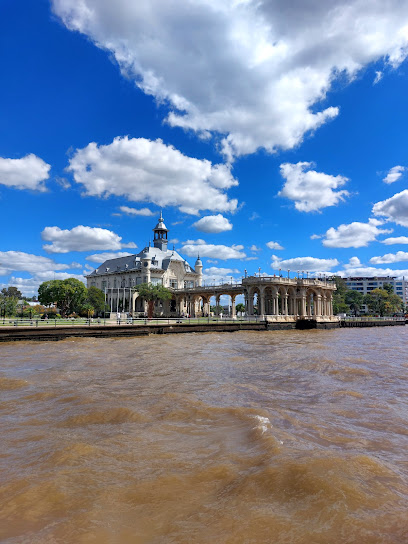
Costa Park
Experience the excitement of Costa Park, a thrilling amusement park in Tigre, Argentina, offering rides, aquatic adventures, and family fun.

Museo de Arte de Tigre
Discover the rich artistic heritage of Argentina at the Museo de Arte de Tigre, a stunning museum set in the heart of the beautiful Tigre Delta.

Aquafan
Discover Aquafan, Buenos Aires' premier water park, offering thrilling slides, relaxing pools, and family-friendly fun for an unforgettable day in the sun.

Christ of the Sierras
Discover the awe-inspiring Christ of the Sierras, a monumental statue offering breathtaking views and serene hiking trails in the heart of Tandil, Argentina.
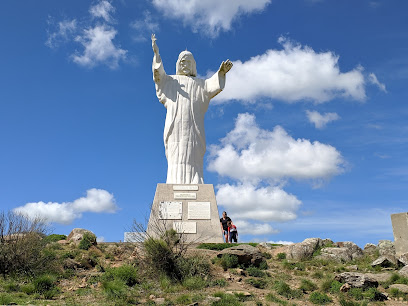
Monument to Don Quixote
Discover the enchanting Monument to Don Quixote in Tandil, Argentina, a captivating blend of art, literature, and breathtaking natural scenery.

Euca tigre
Explore Euca Tigre, a captivating amusement park combining thrilling rides with serene landscapes, perfect for family adventures in Buenos Aires.
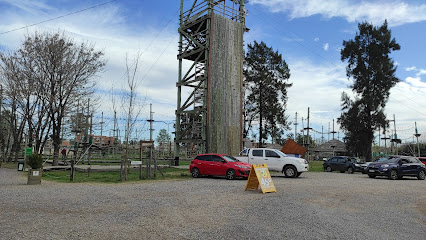
Plaza Daniel María Cazón
Discover the tranquil beauty and historical significance of Plaza Daniel María Cazón in the heart of Tigre, Buenos Aires Province.
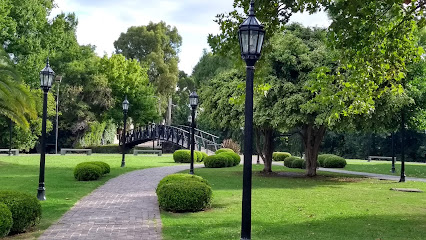
Monumento al Remero
Experience the beauty and heritage of Tigre at the breathtaking Monumento al Remero, a tribute to the region's rowing culture and scenic rivers.

Gato Blanco
Experience the perfect blend of local flavors and breathtaking views at Gato Blanco in Tigre, Buenos Aires Province.

Isla El Descanso
Explore Isla El Descanso, a serene oasis in Tigre featuring lush botanical gardens, an art center, and exquisite Argentine dining for an unforgettable experience.

Bonanza Deltaventura, tu estancia en el Delta
Discover the perfect blend of culinary delights and outdoor adventures at Bonanza Deltaventura in Tigre's breathtaking Delta region.

Delta Terra
Experience the serene beauty of Delta Terra, a nature preserve in the heart of Tigre, where adventure meets tranquility in a stunning natural setting.
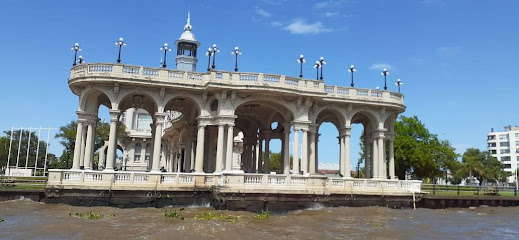
Aires del Delta
Discover the tranquility of Aires del Delta, a serene resort hotel in Tigre, Buenos Aires, where nature meets comfort and adventure awaits.

Buenos Aires Delta
Experience the lively atmosphere of Buenos Aires Delta, a premier shopping destination in Gran Buenos Aires, filled with retail therapy, dining delights, and entertainment.

Unmissable attractions to see
Teatro Gran Rex
Experience the vibrant cultural scene of Buenos Aires at Teatro Gran Rex, a historic theater renowned for exceptional performances and stunning architecture.

Plaza Canning
Explore the vibrant Plaza Canning in Buenos Aires Province, a shopping mall offering diverse shops, delicious dining, and exciting entertainment options.

Museo Histórico Nacional
Discover Argentina's rich history at the Museo Histórico Nacional, a captivating national museum in Buenos Aires showcasing diverse artifacts and exhibitions.

Aquafan
Dive into the excitement at Aquafan, Buenos Aires' premier water park with thrilling slides and relaxing pools for all ages.

Gorriti Art Center
Discover the vibrant Gorriti Art Center in Buenos Aires, where performing arts meet culinary delights in a unique cultural experience.

Municipal Dock
Discover the vibrant Municipal Dock in Tigre, a cultural hub with stunning waterways, local markets, and rich history waiting to be explored.

Río tur catamaranes
Discover the enchanting waterways of Tigre with Río Tur Catamaranes, where adventure meets tranquility in Argentina's stunning delta.

Plazoleta Carlos Pellegrini
Experience the serene beauty of Plazoleta Carlos Pellegrini, a tranquil park in Buenos Aires ideal for relaxation and cultural exploration.

El Galpón de Catalinas
Explore the vibrant art scene at El Galpón de Catalinas, a cultural gem in the heart of Buenos Aires, showcasing local talent and unique exhibitions.

Lo del Diego
Savor authentic Argentine cuisine in the vibrant heart of La Boca at Lo del Diego, a cultural gem in Buenos Aires.

Monumento al Remero
Explore the Monumento al Remero in Tigre, a beautiful tribute to rowing culture surrounded by stunning waterways and lush landscapes.
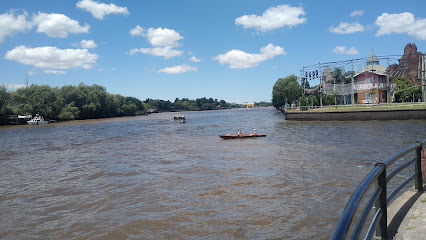
Natventure
Discover the beauty of Tigre's Delta region with Natventure's scenic boat tours and engaging local experiences for every traveler.

Punta Alta
Discover the tranquility of Punta Alta, a beautiful park in Tigre offering lush landscapes and serene waterways perfect for relaxation and outdoor activities.

Isla El Descanso
Explore Isla El Descanso, a serene island in Tigre with stunning botanical gardens, captivating art, and delightful dining experiences.
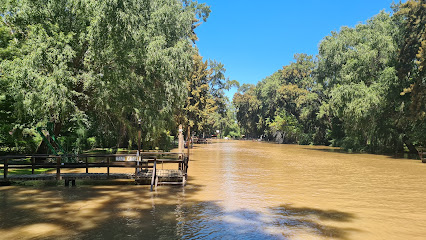
ISLA ATLANTIS
Explore Isla Atlantis in Tigre, a breathtaking tourist attraction surrounded by nature's beauty, perfect for relaxation and outdoor activities.

Essential places to dine
María Lujan
Experience the best of Mediterranean cuisine at María Lujan in Tigre with stunning views and exceptional service.

Restaurante Brujas Tigre
Discover Restaurante Brujas Tigre: A vibrant restaurant and bar offering authentic Argentine cuisine amidst stunning waterfront views.

Restaurante Vivanco
Experience the best of Argentine cuisine at Restaurante Vivanco in Tigre - where flavor meets elegance in a stunning setting.

Restaurante Las Glorias
Experience authentic Argentine cuisine at Restaurante Las Glorias in Tigre—where every dish tells a story of local tradition.

Sweet Pepper - American Grill
Savor delicious hamburgers and authentic American flavors at Sweet Pepper in Tigre, where every bite tells a flavorful story.

Lowell's Biergarten Tigre
Discover Lowell's Biergarten Tigre: A lively beer garden offering local brews and delicious cuisine amidst vibrant outdoor settings.

TBC
Experience authentic Argentine cuisine amidst scenic waterways in Tigre - a must-visit culinary destination for every traveler.

L' Fóret
Experience authentic Argentine grilling at L' Fóret, where every bite celebrates the flavors of Buenos Aires with quality meats and vibrant ambiance.

TIM
Discover La Serena in Tigre: A culinary gem offering gourmet burgers and wraps amidst the natural beauty of Buenos Aires Province.

Lo de Negri Parrilla - Asado Criollo
Discover the flavors of Argentina at Lo de Negri Parrilla, where authentic asado meets fresh seafood in a warm and inviting atmosphere.

Restaurante Costa Sofía
Savor authentic Argentine cuisine at Restaurante Costa Sofía in Tigre – where flavor meets vibrant atmosphere.

World Waffles
Discover the delightful world of waffles at World Waffles in Tigre - where each bite takes you on a sweet journey through flavor!

Zucchini
Experience the vibrant flavors of Argentina at Zucchini in Tigre – where fresh ingredients meet innovative culinary artistry.

La Isla Restaurante
Discover La Isla Restaurante in Tigre: A culinary gem offering local flavors amidst stunning scenery.

Almacén de Tigre
Discover Almacén de Tigre: A delightful restaurant offering authentic Argentine cuisine and cozy ambiance in picturesque Tigre.

Markets, malls and hidden boutiques
Puerto de Frutos
Explore Puerto de Frutos: A vibrant shopping haven in Tigre filled with local crafts, delicious food, and stunning river views.

Docks del Puerto
Discover the vibrant Docks del Puerto in Tigre, a shopping haven filled with local crafts, delicious cuisine, and stunning river views.

PORT PORTAL
Explore Port Portal, the ultimate shopping destination in Buenos Aires, blending retail therapy with local cuisine and culture.

El vestidor fantástico
Explore El Vestidor Fantástico in Tigre, a magical costume store offering unique outfits and creative accessories for every occasion.

Estancias chiripá
Explore Estancias Chiripá in Tigre for a unique shopping experience filled with Argentine fashion and local style.
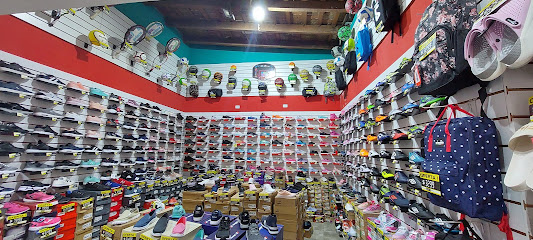
TIENDA NOSTRA
Explore Tienda Nostra, a vibrant gift shop in Tigre, showcasing unique Argentine crafts and souvenirs that capture the local culture perfectly.
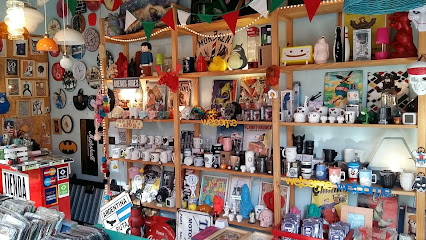
Las Isleras
Discover chic women's fashion at Las Isleras in Tigre, Buenos Aires, where quality meets style in a delightful boutique experience.

Río Tigre
Explore the vibrant and whimsical world of Río Tigre, a novelty store in Tigre, Buenos Aires, perfect for unique souvenirs and gifts.

La Rupia Tigre
Discover unique clothing and accessories at La Rupia Tigre, a vibrant shopping destination in Gran Buenos Aires, reflecting local fashion and style.
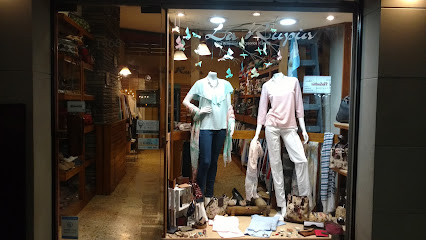
Valoo
Discover stylish children's clothing at Valoo in Tigre, where fashion meets comfort for your little ones, making every purchase a delightful experience.

Margarita
Explore Margarita, a charming gift shop in Buenos Aires Province, filled with unique books, toys, and delightful souvenirs for all ages.

Origen Delta, Productos Regionales isleños
Explore Origen Delta in Tigre for unique isleño gifts, artisanal delights, and a taste of local culture in Buenos Aires Province.

De Pirulas
Explore De Pirulas, Tigre's premier destination for exquisite pine furniture and unique novelty items, celebrating Argentine craftsmanship.

Kiosco - Mi Buen Sabor
Discover Kiosco - Mi Buen Sabor in Tigre: A charming convenience store offering books, candy, and more in a delightful atmosphere.
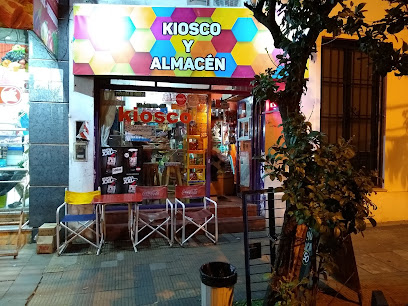
The Mente Shop
Explore The Mente Shop in Buenos Aires for unique local gifts and souvenirs that capture the essence of Argentine culture and craftsmanship.

Essential bars & hidden hideouts
Lowell's Biergarten Tigre
Experience the vibrant atmosphere and local flavors at Lowell's Biergarten Tigre, your ideal destination for craft beers and delicious food.
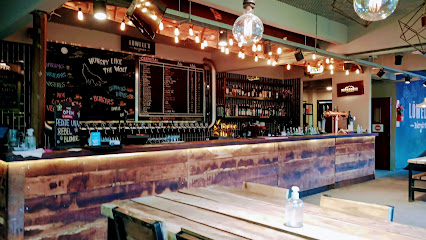
Juannas Tigre
Discover the best of local craft beers and delicious bites at Juannas Tigre, an inviting brewpub in the heart of Tigre.

L' Fóret
Experience the best of Argentine grilling at L' Fóret, a culinary delight in Buenos Aires that captures the essence of local flavors.

Amor a Primera Birra Tap Garden
Experience the vibrant craft beer culture at Amor a Primera Birra Tap Garden, a must-visit brewpub in Tigre offering a delightful selection of local brews.

Rock and Beer RNB
Discover Rock and Beer RNB in Tigre, where handcrafted brews meet delicious burgers and live music for an unforgettable night out.

Celsius
Experience the best of Tigre at Celsius, a lively brewpub featuring local craft beers and delicious cuisine in a scenic setting.
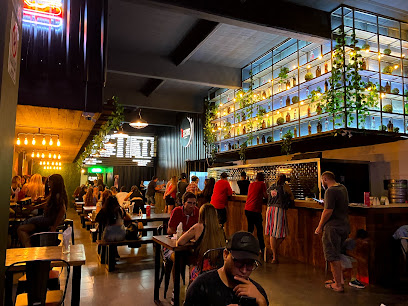
Freedom Tigre Bar
Discover the vibrant nightlife and exquisite cocktails at Freedom Tigre Bar in Tigre, Buenos Aires, where every night is a celebration.

Islander Cervecería
Discover the vibrant atmosphere and exquisite craft beers at Islander Cervecería in the heart of Tigre.

Cerveceria Milberg
Discover Tigre's vibrant nightlife at Cerveceria Milberg, where craft beer and a cozy atmosphere await you.
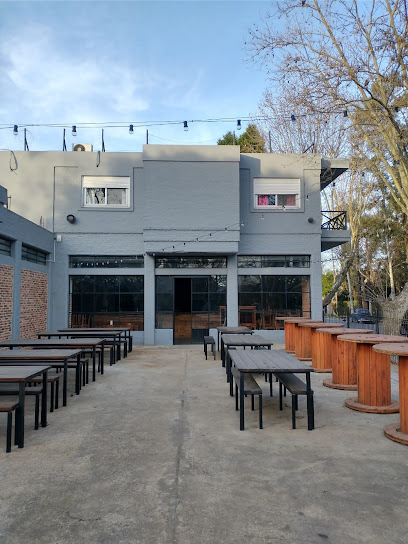
Beware of Dog
Experience the lively atmosphere of 'Beware of Dog', a vibrant bar in Tigre offering a delightful mix of local culture and delicious drinks.

El bar de lucho
Experience the vibrant atmosphere and local flavors at El Bar de Lucho, Tigre's favorite spot for cocktails and camaraderie.

Sauvage foods & drinks
Discover the vibrant culinary scene at Sauvage Foods & Drinks in Tigre, Buenos Aires - where local flavors meet creative cocktails.

The Backside
Experience the vibrant culture of Tigre at The Backside, where delicious drinks and stunning views create an unforgettable bar experience.

Ranch Bar
Experience the vibrant nightlife at Ranch Bar in Tigre, Buenos Aires, where local culture and delicious drinks come together.

Doz Bar
Experience the vibrant nightlife and local charm at Doz Bar, a must-visit spot in scenic Tigre, Buenos Aires Province.

Local Phrases about Tigre
-
- HelloHola
[oh-lah] - GoodbyeAdiós
[ah-dyohs] - YesSí
[see] - NoNo
[noh] - Please/You're welcomePor favor/De nada
[por fah-vohr/deh nah-dah] - Thank youGracias
[grah-syahs] - Excuse me/SorryPerdón
[pehr-dohn] - How are you?¿Cómo estás?
[koh-moh ehs-tahs] - Fine. And you?Bien. ¿Y tú?
[byen. ee too] - Do you speak English?¿Hablas inglés?
[ah-blahs een-glehs] - I don't understandNo entiendo
[noh ehn-tyen-doh]
- HelloHola
-
- I'd like to see the menu, pleaseMe gustaría ver el menú, por favor
[meh goos-tah-ree-ah behr ehl meh-noo, poor fah-vohr] - I don't eat meatNo como carne
[noh koh-moh kahr-neh] - Cheers!¡Salud!
[sah-loohd] - I would like to pay, pleaseMe gustaría pagar, por favor
[meh goos-tah-ree-ah pah-gahr, poor fah-vohr]
- I'd like to see the menu, pleaseMe gustaría ver el menú, por favor
-
- Help!¡Ayuda!
[ah-yoo-dah] - Go away!¡Vete!
[veh-teh] - Call the Police!¡Llama a la Policía!
[yah-mah ah lah poh-lee-see-ah] - Call a doctor!¡Llama a un médico!
[yah-mah ah oon meh-dee-koh] - I'm lostEstoy perdido
[ehs-toy pehr-dee-doh] - I'm illEstoy enfermo
[ehs-toy ehn-fehr-moh]
- Help!¡Ayuda!
-
- I'd like to buy...Me gustaría comprar...
[meh goos-tah-ree-ah kohm-prahr] - I'm just lookingSolo estoy mirando
[soh-loh ehs-toy meer-ahn-doh] - How much is it?¿Cuánto cuesta?
[kwan-toh kwehs-tah] - That's too expensiveEsto es demasiado caro
[ehs-toh ehs deh-mah-syah-doh kah-roh] - Can you lower the price?¿Puede bajar el precio?
[pweh-deh bah-hahr ehl pree-syoh]
- I'd like to buy...Me gustaría comprar...
-
- What time is it?¿Qué hora es?
[keh oh-rah ehs] - It's one o'clockEs la una
[ehs lah oo-nah] - Half past (10)Y media (10)
[ee meh-dyah (deez)] - MorningMañana
[mah-nyah-nah] - AfternoonTarde
[tahr-deh] - EveningNoche
[noh-cheh] - YesterdayAyer
[ah-yehr] - TodayHoy
[oy] - TomorrowMañana
[mah-nyah-nah] - 1Uno
[oo-noh] - 2Dos
[dohs] - 3Tres
[trehs] - 4Cuatro
[kwah-troh] - 5Cinco
[seen-koh] - 6Seis
[says] - 7Siete
[syeh-teh] - 8Ocho
[oh-choh] - 9Nueve
[nweh-veh] - 10Diez
[dyehs]
- What time is it?¿Qué hora es?
-
- Where's a/the...?¿Dónde está...?
[dohn-deh ehs-tah] - What's the address?¿Cuál es la dirección?
[kwal ehs lah dee-rehk-syon] - Can you show me (on the map)?¿Puedes mostrarme (en el mapa)?
[pweh-dehs mohs-trar-meh (ehn ehl mah-pah)] - When's the next (bus)?¿Cuándo es el próximo (autobús)?
[kwan-doh ehs ehl proh-see-moh (ow-toh-boos)] - A ticket (to ....)Un boleto (a ....)
[oon boh-leh-toh (ah)]
- Where's a/the...?¿Dónde está...?
History of Tigre
-
Tigre was officially founded on August 2, 1820. The area initially served as a strategic military outpost and a hub for the burgeoning timber industry. Its location along the Paraná Delta made it an important point for the transport of goods and materials.
-
In 1865, the arrival of the railway transformed Tigre into a popular weekend retreat for Buenos Aires residents. The Buenos Aires and Rosario Railway connected the capital city to Tigre, making it easily accessible and boosting its popularity as a leisure destination.
-
The Tigre Club, established in 1912, became a symbol of the town’s opulent past. This grand building, which housed the Tigre Hotel and later a casino, attracted the elite of Buenos Aires. The club was renowned for its lavish parties and luxurious facilities, contributing significantly to Tigre's cultural heritage.
-
The Puerto de Frutos, or Fruit Market, began in the 1930s as a place where local farmers from the delta could sell their produce. Over time, it evolved into a bustling marketplace that not only features fresh fruits and vegetables but also crafts, furniture, and other goods. It remains one of Tigre’s most vibrant and visited attractions.
-
Opened in 2006, the Museo de Arte Tigre is housed in the former Tigre Club building. The museum showcases Argentine art from the 19th and 20th centuries, including works by renowned artists such as Quinquela Martín and Antonio Berni. The building itself is an architectural gem, reflecting the grandeur of its early 20th-century origins.
-
Tigre is part of the Paraná Delta, one of the world's largest deltas. This unique ecosystem, characterized by its labyrinthine network of waterways and abundant wildlife, has shaped the history and culture of the region. The delta supports a variety of flora and fauna, making it a popular spot for eco-tourism and river excursions.
-
Today, Tigre is a blend of historical charm and modern attractions. The town offers an array of activities from riverboat tours and kayaking to visiting amusement parks like Parque de la Costa. Its proximity to Buenos Aires continues to make it a favored getaway for locals and tourists alike.
Tigre Essentials
-
Tigre is located approximately 28 kilometers northwest of Buenos Aires, Argentina. The most convenient way to reach Tigre is by taking the Tren de la Costa (Coastal Train) from the Retiro Station in Buenos Aires. The train ride takes about 50 minutes and offers scenic views along the way. Alternatively, you can take a bus or hire a taxi or ride-sharing service from Buenos Aires to Tigre. For those who prefer driving, Tigre is accessible via the Pan-American Highway (Ruta 9).
-
Once in Tigre, getting around is relatively easy. The town is compact, and many attractions are within walking distance. For exploring the Parana Delta, local boat tours and water taxis are available. Bicycles are also a popular and eco-friendly way to navigate the area. Additionally, local buses and taxis are readily available for longer trips within the town and surrounding areas.
-
The official currency in Argentina is the Argentine Peso (ARS). Credit cards are widely accepted in most hotels, restaurants, and shops in Tigre. However, it is advisable to carry some cash for smaller establishments and local markets. ATMs are available throughout Tigre, but it is wise to withdraw sufficient cash in Buenos Aires before arrival to avoid any inconveniences.
-
Tigre is generally considered a safe destination for tourists. However, it is important to exercise standard precautions. Avoid walking alone at night in unfamiliar areas and keep an eye on your belongings, especially in crowded places such as markets and train stations. Certain neighborhoods, such as the outskirts of Tigre, may have higher crime rates, so it is best to avoid those areas during your visit.
-
In case of emergency, dial 911 for immediate assistance. The local police station and medical facilities are available in Tigre. It is highly recommended to have travel insurance that covers medical emergencies and other unforeseen events. For minor health issues, there are pharmacies in the town where you can purchase over-the-counter medications. Additionally, the Tigre Hospital is equipped to handle medical emergencies.
-
Fashion: Do dress comfortably and casually, but avoid overly revealing clothing. Lightweight, breathable fabrics are ideal for the climate. Religion: Do respect local customs and traditions, especially when visiting religious sites. Public Transport: Do be courteous and offer your seat to elderly passengers. Avoid eating or drinking on public transport. Greetings: Do greet people with a friendly 'Hola' or 'Buen día.' A handshake is common in formal settings. Eating & Drinking: Do try local dishes and specialties. Don't refuse food or drink offered by locals, as it may be considered impolite.
-
To experience Tigre like a local, visit the Puerto de Frutos, a bustling market where you can find crafts, local produce, and souvenirs. Engage with locals, who are often friendly and willing to share insights about the town's history and culture. Don't miss taking a boat tour through the intricate waterways of the Parana Delta. For a unique experience, visit the Museo de Arte Tigre, housed in a beautiful historic building, and enjoy a riverside picnic in one of Tigre's many parks.
Trending Landmarks in Tigre
Nearby Cities to Tigre
-
Things To Do in Colonia del Sacramento
-
Things To Do in La Plata
-
Things To Do in Fray Bentos
-
Things To Do in Montevideo
-
Things To Do in Rosario
-
Things To Do in Maldonado
-
Things To Do in Punta del Este
-
Things To Do in Tacuarembó
-
Things To Do in Mar del Plata
-
Things To Do in Córdoba
-
Things To Do in Encarnacion
-
Things To Do in Carmen del Parana
-
Things To Do in San Rafael
-
Things To Do in Mendoza
-
Things To Do in San Juan













